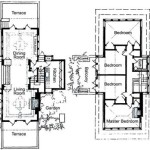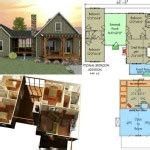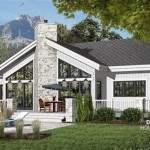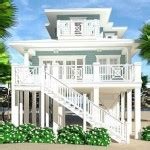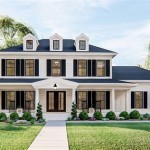1920s Craftsman Bungalow House Plans: Timeless & Affordable Home Design
The Craftsman Bungalow, a dominant architectural style of the early 20th century, particularly flourished in the 1920s. This house type offers a compelling combination of aesthetic appeal, functionality, and affordability, making original 1920s Craftsman Bungalow house plans highly desirable even today. The style’s emphasis on practicality, natural materials, and handcrafted details resonates with contemporary preferences for comfortable and livable homes. This article examines the defining characteristics, enduring appeal, and key considerations when exploring 1920s Craftsman Bungalow house plans.
The Craftsman Bungalow movement emerged in response to the ornate and often excessive Victorian architecture that preceded it. Gustav Stickley, a prominent figure in the American Arts and Crafts movement, championed simple, well-built homes that celebrated honest craftsmanship and the beauty of natural materials. Bungalows, being relatively small and easily constructed, aligned perfectly with these principles, becoming a symbol of middle-class homeownership during the interwar period.
These homes were designed to be accessible to a broad spectrum of homeowners, with designs ranging from modest, single-story dwellings to larger, two-story versions. The flexibility in size and layout contributed to the style’s widespread popularity. Furthermore, the availability of pre-designed house plans, often sold through catalogs and magazines, streamlined the building process and further lowered the barrier to entry for aspiring homeowners.
Defining Characteristics of 1920s Craftsman Bungalows
Several key features distinguish 1920s Craftsman Bungalows from other architectural styles. These elements contributed to the houses' distinctive aesthetic and functional characteristics.
Firstly, prominent, low-pitched rooflines with wide overhanging eaves are a hallmark of the style. These roofs typically feature exposed rafters, adding a visual element of craftsmanship and reinforcing the connection to natural materials. The broad eaves also provide shade and protect the exterior walls from the elements, contributing to the home's durability.
Secondly, the presence of a front porch is practically ubiquitous in 1920s Craftsman Bungalows. This porch is often supported by substantial, tapered columns or piers constructed of brick or stone. The porch serves as a transitional space between the interior and exterior, encouraging social interaction and outdoor living. It also contributes significantly to the home's curb appeal.
Thirdly, natural materials are central to the Craftsman aesthetic. Wood, stone, and brick are commonly used for both the exterior and interior of these homes. Wood siding, often in a shingle or clapboard pattern, is a popular choice for exterior walls. Stone or brick is frequently used for foundations, chimneys, and porch supports. Inside, wood is prevalent in trim, flooring, and built-in features.
Fourthly, thoughtfully designed interior layouts characterize these bungalows. Open floor plans, though not always as expansive as in modern homes, were often employed to create a sense of spaciousness. Built-in features, such as bookcases, window seats, and china cabinets, are common, maximizing storage and adding to the home's character. The integration of these built-ins demonstrates a commitment to maximizing functionality within a limited floor area.
Finally, windows play a crucial role in the design of 1920s Craftsman Bungalows. Double-hung windows, often with divided lights in the upper sash, are typical. Casement windows are also sometimes used. Large windows are strategically placed to maximize natural light and ventilation, contributing to a bright and airy interior.
The Enduring Appeal of 1920s Craftsman Bungalow House Plans
The popularity of 1920s Craftsman Bungalow house plans persists for several reasons. These designs offer a timeless appeal that transcends fleeting architectural trends.
Firstly, the focus on simplicity and functionality resonates with modern sensibilities. The uncluttered design and efficient use of space make these homes practical and comfortable for contemporary living. The emphasis on natural materials and handcrafted details provides a sense of warmth and authenticity that is often lacking in more modern, mass-produced homes.
Secondly, the affordability of building or renovating a Craftsman Bungalow remains a significant draw. The relatively small size of these homes, coupled with the use of readily available materials, can make them a more economical option than constructing a larger, more elaborate house. Furthermore, the enduring popularity of the style means that there is a wealth of information and resources available for those looking to restore or renovate a 1920s Craftsman Bungalow.
Thirdly, the inherent charm and character of these homes are undeniable. The handcrafted details, the warm and inviting interiors, and the connection to the outdoors create a sense of place that is difficult to replicate in modern construction. These homes evoke a sense of nostalgia for a simpler time, while still offering the comforts and conveniences of modern living.
Fourthly, the adaptability of Craftsman Bungalow designs makes them suitable for a variety of lifestyles. While the original designs were often modest in size, many can be expanded or modified to meet the needs of a growing family. Additions can be seamlessly integrated into the existing structure, maintaining the integrity of the original design while providing additional living space.
Fifthly, the sustainability aspects of Craftsman Bungalows are increasingly relevant in today's world. The use of natural materials, the emphasis on natural light and ventilation, and the efficient use of space contribute to a more environmentally friendly home. Many of these homes can be easily retrofitted with energy-efficient appliances and systems, further reducing their environmental impact.
Key Considerations When Exploring 1920s Craftsman Bungalow House Plans
When considering building or restoring a 1920s Craftsman Bungalow based on original house plans, several key factors must be taken into account.
Firstly, the condition of the existing structure, if applicable, needs thorough evaluation. If working with an existing bungalow, a comprehensive inspection should be conducted to identify any structural issues, such as foundation problems, termite damage, or roof leaks. Addressing these issues early on is crucial to ensuring the long-term stability and integrity of the home.
Secondly, adherence to historical accuracy is crucial when restoring or renovating a 1920s Craftsman Bungalow. Preserving the original architectural details, such as trim, windows, and hardware, is essential to maintaining the home's character and value. When replacing or repairing these details, it is important to use materials and techniques that are consistent with the original construction.
Thirdly, adapting the floor plan to meet modern needs may require careful consideration. While preserving the original layout is often desirable, adjustments may be necessary to accommodate contemporary lifestyles. For example, kitchens and bathrooms may need to be updated to meet modern standards of functionality and comfort. Balancing the desire for modern amenities with the need to preserve the home's historical integrity is a key challenge in any renovation project.
Fourthly, sourcing authentic materials and fixtures can be a time-consuming but rewarding process. Salvage yards, antique stores, and specialty suppliers are excellent resources for finding original or reproduction materials that are consistent with the 1920s Craftsman aesthetic. Careful attention to detail in the selection of materials and fixtures can make a significant difference in the overall look and feel of the finished project.
Fifthly, energy efficiency upgrades should be considered to improve the home's performance and reduce its environmental impact. While preserving the original architectural details, it is possible to integrate modern energy-efficient technologies, such as insulation, windows, and heating and cooling systems. These upgrades can significantly reduce energy consumption and improve the comfort of the home.
Sixthly, local building codes and regulations must be followed. Before beginning any construction or renovation project, it is essential to obtain the necessary permits and approvals from local authorities. Compliance with building codes ensures that the project is safe and meets all applicable standards.
Finally, working with experienced professionals is crucial to the success of any Craftsman Bungalow project. Architects, contractors, and interior designers who have expertise in historic preservation can provide valuable guidance and ensure that the project is completed to a high standard. Their knowledge and experience can help to navigate the challenges of restoring or renovating a historic home and achieve a result that is both beautiful and functional.

1920s House Plans By The Ew Stillwell Co Small Economical Bungalow Cottage No L 112

1920s House Plans 74 Charming Vintage Designs That Shaped American Homes Click Americana

Modern 1920s Bungalow 1922 Bennett Homes Better Built Ready Cut The Ashland Kit Houses

1920s House Plans 74 Charming Vintage Designs That Shaped American Homes Click Americana

1925 Classic Craftsman Style Bungalow Small House Plan C L Bowes Hinsdale Il

Vintage House Plans Old Houses For

2 Story Vintage Craftsman House Plans Style

Craftsman House Plans Home Floor Monster

Vintage House Plans Old Houses For

1920s House Plans 74 Charming Vintage Designs That Shaped American Homes Click Americana
Related Posts



